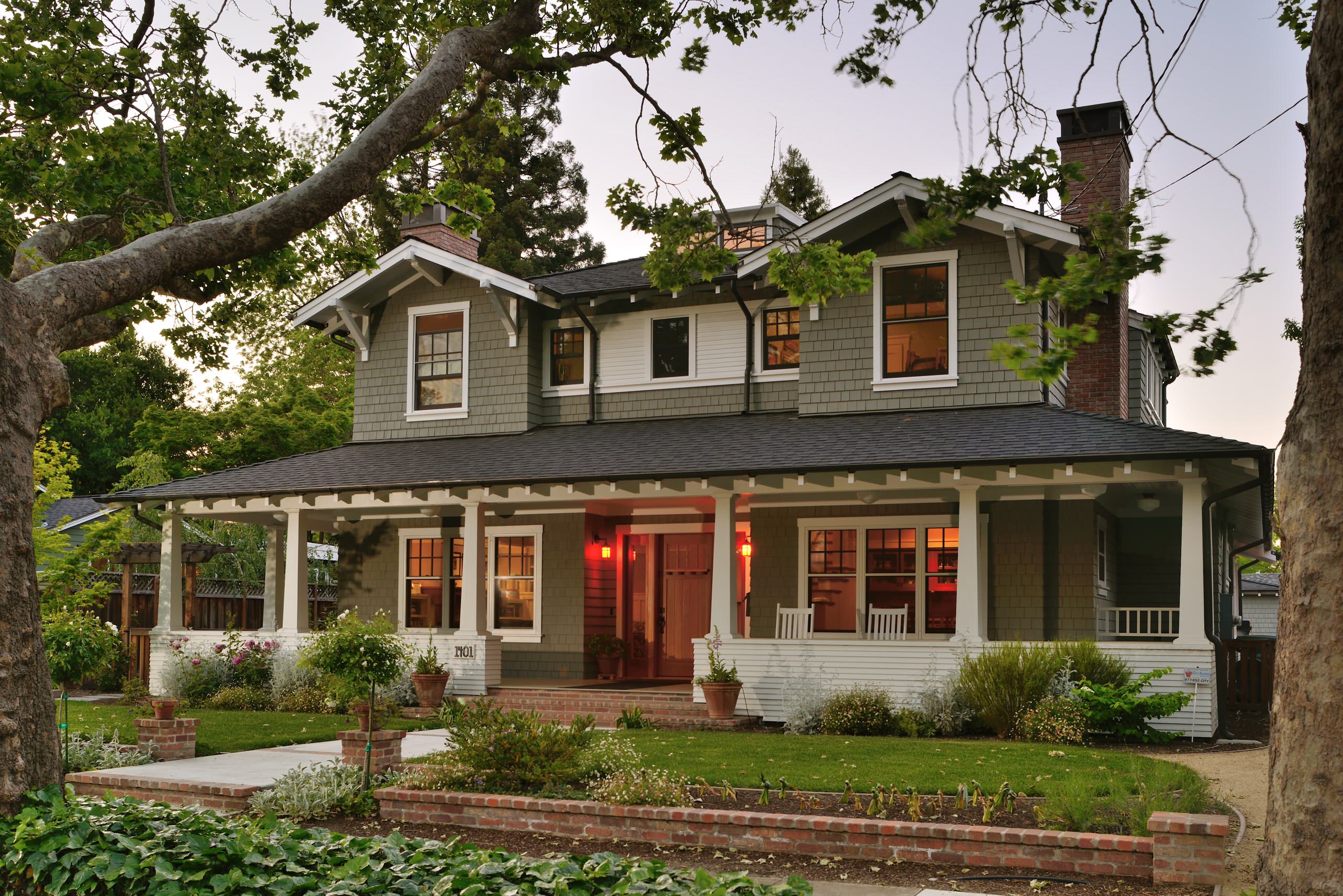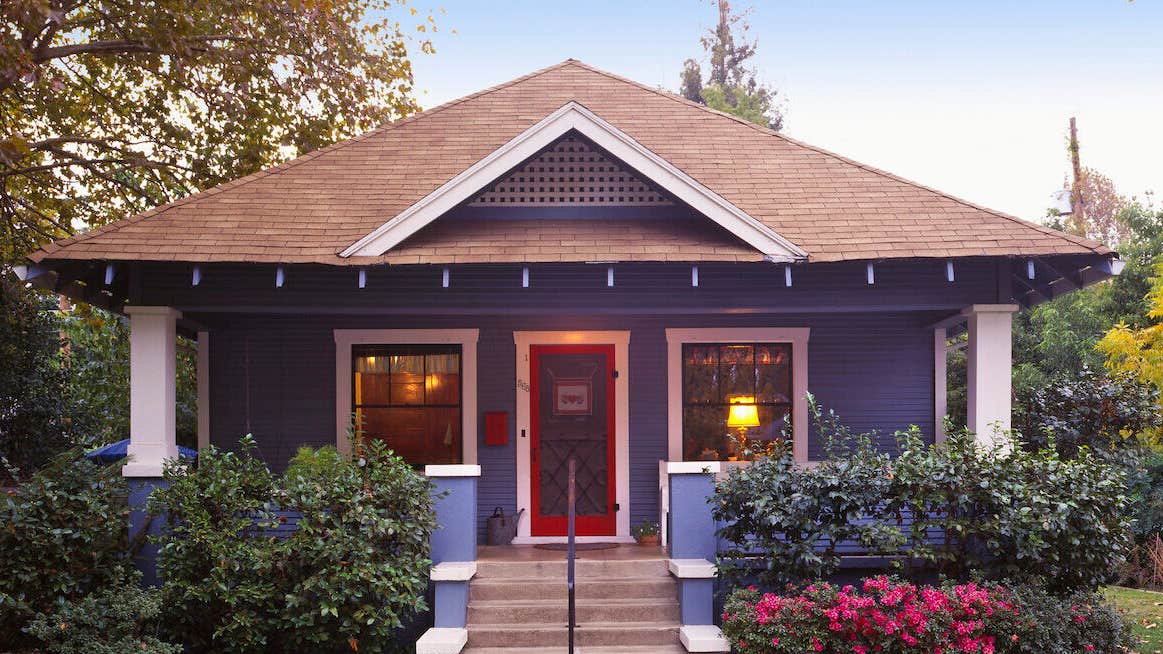Top 10 Creative Concepts for a Beautiful craftsman style house
Wiki Article
The Duty of Arts & & Crafts Architects in Elevating Architectural Solutions in Residential Layout
Arts and Crafts architects considerably affect household style via their commitment to craftsmanship and sustainability. They focus on handcrafted details and all-natural products, which enhance both visual appeals and community identity. By involving customers in the layout process, these architects produce one-of-a-kind living rooms that resonate with personal tastes. This approach questions about the future trajectory of property architecture and its prospective influence on area dynamics. craftsman style house. What lies ahead for this classic style approach?
The Principles of Arts and Crafts Architecture
The significance of Arts and Crafts architecture depends on its commitment to craftsmanship and simpleness. This building movement emerged in the late 19th century as an action to automation, highlighting the worth of handmade information and natural materials. The principles of Arts and Crafts architecture prioritize functionality and consistency with the environment. Frameworks usually feature low-pitched roofing systems, broad eaves, and subjected rafters, promoting a sense of unity with nature.Artisans played a significant duty in this style, frequently incorporating ornamental elements like stained glass, ceramic tiles, and woodwork, which reflect regional workmanship. The shade scheme often tends to be natural and suppressed, enabling structures to blend seamlessly into their environments. On top of that, the design encourages open layout and public spaces, fostering a feeling of togetherness. Generally, the concepts of Arts and Crafts architecture celebrate the charm of simplicity and the significance of human connection to both nature and neighborhood.

Sustainable Practices in Residential Design
While the demand for eco responsible living remains to grow, sustainable practices in residential layout have actually obtained substantial traction among architects and homeowners alike. Architects are progressively incorporating energy-efficient innovations and lasting materials right into their styles, aiming to minimize carbon footprints and improve energy preservation. Methods such as easy solar style, green roof coverings, and rainwater harvesting systems are ending up being standard elements of modern-day domestic architecture.The selection of locally sourced materials reduces transportation emissions and supports regional economic situations. Emphasis on natural light and air flow not just improves indoor air quality but also minimizes reliance on synthetic lights and climate control systems. These lasting methods show a dedication to protecting the environment while offering home owners with comfortable, efficient home. As understanding of environmental problems grows, the combination of sustainability in residential style is poised to become a specifying characteristic of modern architecture, assisted by the concepts established by Arts and Crafts architects.
Customization and Customization in Home Layout
Personalization and customization in home design have become vital fads in action to the growing wish for distinct living environments that mirror individual tastes and lifestyles. Property owners significantly seek to tailor areas that resonate with their individualities, causing an extra meaningful link with their space. craftsman style house. This activity encourages architects to engage clients in the design process, cultivating partnership that assures the last end result embodies the homeowner's visionAspects such as bespoke formats, custom-made materials, and customized finishes permit a diverse series of expressions in property style. Arts and Crafts architects play an essential function in this evolution, emphasizing workmanship and high quality. Their focus on incorporating creative components with performance guarantees that each home is not only aesthetically pleasing yet additionally distinctively matched to the occupants' needs. As a result, this focus on customization improves the general domestic experience, developing areas that are both individual and long-lasting.

The Influence of Arts and Crafts Architects on Area Looks
As neighborhoods progress, the impact of Arts and Crafts architects considerably forms their aesthetic landscape. By highlighting handmade information, natural products, and conventional building and construction techniques, these architects create homes that reverberate with their surroundings. Their layouts frequently include local vegetations, textures, and colors, fostering a feeling of consistency between constructed settings and nature.Source Moreover, the Arts and Crafts motion promotes neighborhood identification with building connection. By urging house owners to embrace comparable design concepts, neighborhoods create a natural character that boosts visual allure. This architectural harmony not just enhances the aesthetic experience yet also instills a feeling of satisfaction among citizens.
The focus on sustainability and craftsmanship in Arts and Crafts architecture lines up with contemporary worths, making these styles appropriate in contemporary setups. Inevitably, Arts and Crafts architects contribute significantly to the overall charm and cultural honesty of communities, leaving an enduring influence on their aesthetic legacy.

Future Trends in Arts and Crafts Architecture
With an enhancing focus on sustainability and personalization, future trends in Arts and Crafts architecture are poised to mix traditional craftsmanship with modern innovation - craftsman style house. Architects are most likely to focus on green materials, using recovered wood and all-natural rock to enhance the sustainability of domestic styles. The integration of wise home innovation will come to be prevalent, enabling customized living experiences without endangering visual integrityIn addition, the resurgence of artisanal techniques will certainly cultivate a renewed recognition for handmade elements, such as bespoke cabinetry and custom-made floor tile work. Future designs might additionally reflect a focus on community-oriented areas, motivating communication and connection amongst citizens. Exterior living areas will certainly obtain prominence, flawlessly integrating nature into the home atmosphere. As Arts and Crafts architecture progresses, it will proceed to recognize its roots while adapting to contemporary demands, creating unified areas that mirror private worths and lifestyles.
Regularly Asked Inquiries
What Inspired the Arts and Crafts Activity in Architecture?
The Arts and Crafts movement in architecture was inspired by a response against industrialization, stressing handcrafted quality, all-natural products, and a go back to conventional workmanship, intending to create unified, useful spaces that commemorated creativity and originality.Exactly how Do Arts and Crafts Architects Collaborate With Customers?
Arts and crafts architects team up with clients via open discussion, prioritizing individual requirements and visual appeals. They highlight craftsmanship and sustainability, cultivating a collaboration that integrates the client's vision with the engineer's Learn More Here competence in design and products.What Products Are Frequently Used in Arts and Crafts Residences?
Common products in Arts and Crafts homes include all-natural timber, stone, and brick, highlighting workmanship and organic aesthetics. These elements develop a warm, inviting ambience, showing the motion's devotion to top quality and simpleness in style.Just how Do Arts and Crafts Styles Boost Indoor Living Areas?
Arts and Crafts designs enhance interior living rooms by promoting natural light, open floor plans, and handcrafted details. These components promote a warm, inviting environment, encouraging a link between additional info citizens and their atmospheres via thoughtful, practical aesthetics.What Are Some Famous Examples of Arts and Crafts Architecture?
Famous examples of Arts and Crafts architecture include the Gamble Residence, Greene and Greene's work of art in The golden state, and the Robie House by Frank Lloyd Wright. These frameworks display handcrafted details and consistency with nature, specifying the motion's essence.Report this wiki page